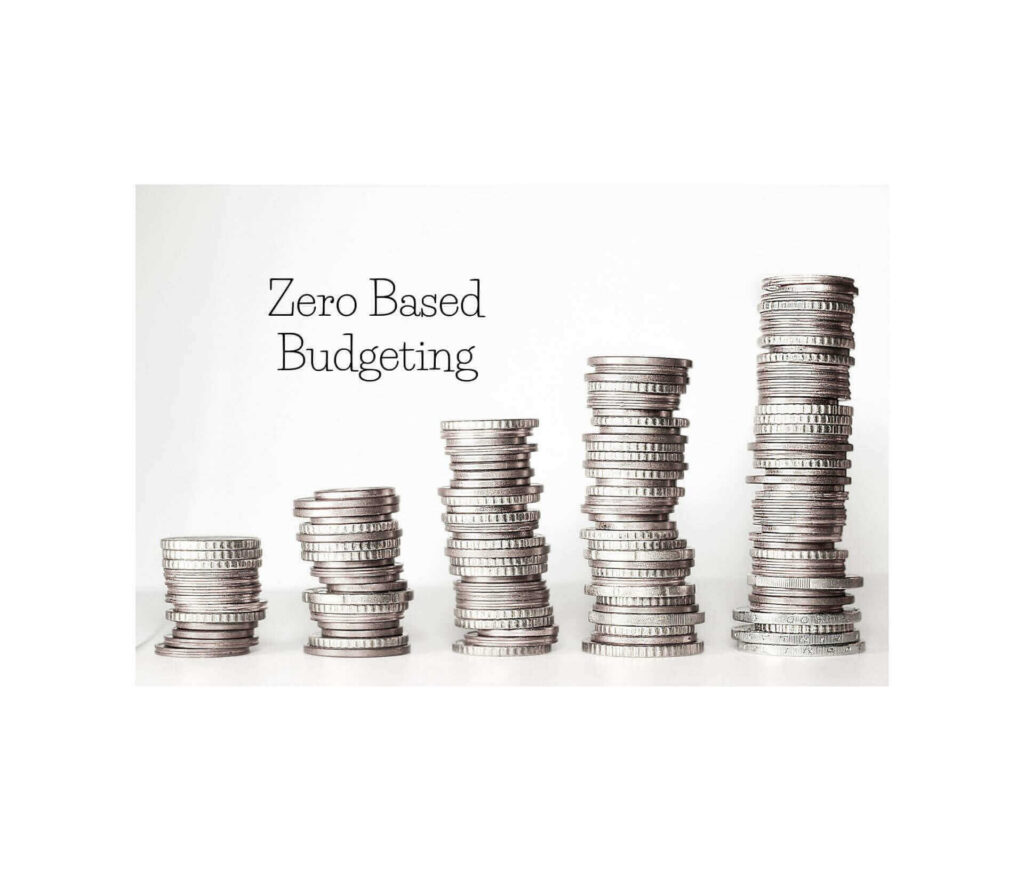
Zero based budgeting is an innovative financial strategy that has recently gained traction. This method allows individuals and businesses to control their finances and maintain a more balanced budget.
We’ll look at zero-based budgeting, how it works, its pros and cons, and why it might fit your needs perfectly.
Read on to learn more!
Zero Based Budgeting Overview
Zero based budgeting is called “zero-based” because it starts at zero, and you must justify every expense. You must build up your budget by adding expenses one by one. Rather than starting with a set amount of money and trying to work within that amount.
Meet the father of Zero based budgeting Peter Pyhrr, a management consultant. His zero-based budget strategy reached white house in the 1970s. He claimed that traditional budgeting was faulty as it allowed unused funds to roll over, causing waste and inefficiency.
This method later grew up to 57%, each year between 2013 through 2017, among the 85 World largest companies such as Unilever PLC, Mondelez International Inc., and Kraft Heinz Co.
Why Is Zero Based Budgeting Important?
Why is a zero-based budget important? It forces you to think about every single expenditure and consider whether it is necessary. It also helps you identify unnecessary expenses and cut them from your budget, freeing up money for other priorities.
In addition, zero based budgeting (ZBB) helps you allocate your resources more effectively and make better financial decisions. Thus, it enables you to manage and achieve your financial goals.
Advantages of Zero-Based Budgeting
Here are the advantages of a zero based budget:
1. Efficient Allocation of Resources
With a zero-based budget, organizations can justify and allocate resources based on current needs and priorities. It ensures that every dollar spent contributes directly to the organization’s goals.
Unlike traditional budgeting, where past expenses often dictate future ones, ZBB encourages a fresh evaluation of every expense category, leading to more efficient resource allocation. It is also helpful in optimizing operating expenses.
2. Enhanced Revenue Focus
ZBB encourages a deep dive into revenue generation strategies. By scrutinizing each revenue stream and assessing its potential, organizations can identify growth opportunities and prioritize efforts where they can maximize returns. This proactive approach to revenue management can lead to increased income and profitability.
3. Resilience to Economic Shocks
ZBB’s granular evaluation of expenses and revenues equips organizations with better financial preparedness. When economic shocks or uncertainties arise, it allows for swift adjustments.
Unlike traditional budgeting, which may be less flexible, ZBB provides a mechanism to reallocate resources quickly, helping organizations weather economic storms effectively.
4. Mitigation of Legacy Costs
Legacy costs, such as outdated processes or unproductive investments, can burden an organization’s finances. ZBB empowers organizations to identify and eliminate such legacy costs.
By scrutinizing the value of every expense, ZBB allows for the redirection of resources toward more strategic initiatives, ensuring that past inefficiencies do not continue to drain resources.
5. Increased Accountability and Transparency
In addition, it promotes accountability at all levels of an organization. Each department or unit must justify its budget, leading to a culture of responsibility and ownership. It also enhances transparency by clearly illustrating the rationale behind budget decisions. This transparency fosters better communication and understanding among team members, ultimately driving more aligned and informed decision-making.
Drawbacks of Zero Based Budgeting
Here are the disadvantages of zero based budgeting:
1.Time-Consuming Process
Zero based budgeting (ZBB) can be a bit of a time eater. Unlike traditional budgeting, where you can build on past budgets, ZBB requires a deep dive into every expense and source of income. This can be quite a task, especially for larger organizations. It means folks have to spend a lot of time justifying every little item in the budget. All this scrutiny can drag out the budgeting process, taking people away from other important work.
2. Complex to Get Going
Getting ZBB up and running can be a bit of a puzzle, especially if you’re new to it. It’s like learning a whole new way of budgeting. You need to change the way you think about budgets and how you go about making them. Plus, ZBB needs lots of data crunching, analysis, and paperwork. For some organizations, this can be quite a challenge, especially if they don’t have the right tools or know-how. And sometimes, the complexity of ZBB can make employees and budget decision-makers a bit hesitant to embrace it.
3. Short-Term Focus Alert
Zero based budgeting is all about starting your budget from scratch and justifying every expense from square one. While that’s great for finding quick cost savings, it can sometimes make organizations think mainly about short-term gains. They might end up focusing so much on saving money right now that they forget about long-term investments and important strategies. This kind of tunnel vision can put the brakes on innovation and hinder big-picture growth. It’s like running so fast that you miss the scenic route.
Characteristics of Zero-Based Budgeting
Here are several key characteristics :
- You must justify all expenses: In a zero-based budget, every cost must be justified and approved to be included in the budget. It means you must carefully consider each expenditure and decide whether it is necessary.
- The budget starts at zero: A zero-based budget begins with a blank slate rather than starting with a predetermined budget and then adjusting expenses to fit within that budget. It means you must build up your budget by adding fees individually, rather than creating a set amount of money and trying to work within it.
- Every function or activity is reviewed: An organization’s function or activity is reviewed and evaluated on a zero-based budget. It helps to ensure that resources are being used effectively and efficiently.
- It focuses on decision-making: Zero-based budgeting is a decision-making process that helps prioritise activities and allocate resources more effectively. It encourages managers to think critically about their budgets and make informed financial decisions.
Examples of Zero-Based Budgeting
Let’s say a clothing store adopts a zero-based budget approach to manage its expenses. After conducting a thorough review of its operations, the store identified that the cost of purchasing packaging material for its products has been increasing annually due to inflation. Upon closer examination, the store finds that it can produce the packaging material in-house by hiring a graphic designer and investing in a printing machine.
By doing so, the store can cut its packaging costs significantly and even produce custom packaging that enhances its brand image. The zero-based budgeting process allowed the store to identify an area where it could save money and improve its brand image.
With traditional budgeting, the cost of packaging material would’ve increased automatically, and the store would have absorbed the added expense. This approach helps to scrutinise expenses in detail and make informed decisions on whether to outsource or produce materials in-house. However, the store must also consider the costs of producing the packaging material in-house and weigh them against the potential savings.
Zero Based Budgeting Process
The process comprises several key steps that help organisations prioritise spending and identify areas for cost savings. Ultimately, leading to more efficient resource allocation and improved financial performance.
The first step is to identify the decision units, which are individual departments or functions within an organisation. Then set budget priorities based on the organisation’s goals and objectives. Each decision unit needs to identify the most critical activities and allocate resources accordingly.
In the next step, decision units build their budgets from the ground up, starting with zero and justifying every expense. This includes analysing costs and identifying opportunities for cost savings.
Once the decision units have built their budgets, they get reviewed by upper management to ensure they align with the organisation’s goals and priorities. Finally, the organisation must continuously monitor and adjust the budget throughout the year as needed.
Key Strategies for Implementing Zero-Based Budgeting
Here are five best practices for implementing zero-based budgeting (ZBB):

- Adopt a strategic approach: ZBB should be viewed as a strategic exercise rather than just a cost-cutting exercise. This means identifying areas of overspending, reallocating resources towards strategic growth initiatives. Also, involve line of business leaders to ensure resources are being used effectively.
- Use the right planning platform: It is essential to have a modern planning and budgeting software platform that incorporates AI and machine learning. The software should include features like predictive planning, scenario modelling, and top-down and bottom-up budgeting.
- Embrace connected planning: ZBB should be viewed as part of a larger, connected planning process. It is essential to partner with sales, marketing, HR, and operations to make faster decisions based on accurate and timely information.
- Foster a culture of accountability: Successful implementation of ZBB requires buy-in from all levels of the organisation. Thus, creating a culture of accountability, ensuring that everyone understands the importance of ZBB and their role in the process.
- Continuous improvement: ZBB is an ongoing process that requires continuous improvement. It’s essential to monitor progress, identify areas for improvement, and make adjustments as necessary to ensure that ZBB is effectively supporting the organisation’s strategic objectives.
By adopting these best practices, companies can effectively implement ZBB and drive better business outcomes.
Zero-based Budgeting VS Traditional Budgeting
When it comes to budgeting, two popular approaches are traditional budgeting and zero-based budgeting (ZBB). The traditional budgeting approach is more widely used and it relies on the previous year’s budget and expense levels. On the other hand, ZBB requires a new justification for every expense and starts from a zero base.
It requires a cost and benefit analysis for every expense, proposed by the line(s) of business management. The focus is on informed decision-making instead of just cost-cutting. This approach can lead to greater responsiveness and clarity, as every expense requires justification.
Traditional budgeting is used to analyse expenses and find areas where costs can be reduced. Expenses don’t always require justification, so the management team decides based on their perceived necessity. This approach may lead to less clarity and responsiveness to market changes or unforeseen expenses.
Questions About Zero-Based Budgeting
Is it better to use a spreadsheet or a program for zero-based budgeting?
Yes. It is better to use a program for zero-based budgeting as it allows for more flexibility, automation, and customization compared to a spreadsheet. Programs can also offer features such as tracking expenses and generating reports, making it easier to stick to a zero-based budget.
How can I use zero-based budgeting to improve my productivity and efficiency?
Using zero-based budgeting improves productivity and efficiency by forcing you to analyse and prioritise expenses, leading to better decision-making and resource allocation. The process encourages regular tracking and monitoring of expenses. Thus, helps identify areas where to cut costs and increase savings, ultimately leading to increased productivity and efficiency.
How can I get started with zero-based budgeting?
To get started with zero-based budgeting, begin by identifying all sources of income and expenses. Then, assign a specific purpose for every dollar earned, and track all expenses to ensure they align with the budget. Continuously review and adjust the budget as needed.